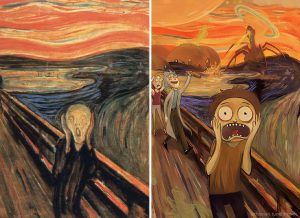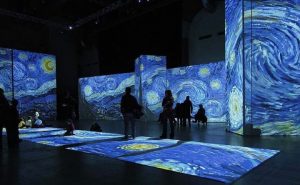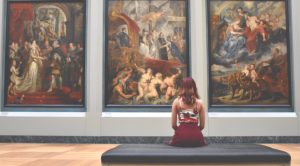
Formal analysis is basically to look at a work of art and trying to understand what the artist wishes to convey visually. And even after analyzing it, it will most likely not what the artist wants to convey because the viewer would interpret it based on who they are. As a person living in a certain place and time with their own experiences. Formal analysis looks at certain basic traits in an artwork. They are color, line, space, mass and scale.
To analyze color, you first look at the particular colors of the piece. You also look at the characteristics of each color used, like the saturation or the shade. Maybe the specific colors are referring to a event, action, or concept. Some examples are if a piece is predominantly white, it can stand for purity, or it could also mean the blinding light of a rising sun. When looking at lines, we are looking for how a the lines are formed. Are they emphasizing light and dark, is the line contour strong and continuous, fuzzy and soft. Are they broken up into many pieces to give you a lack of shape? How complex or simple is the silhouette?
Space indicates whether an image conveys a sense of three dimensional space. Is the artwork create a sense of depth it’s landscape or setting, like you can walk inside of it? Or is it lacking in depth, like a brick wall? Mass is the space created by the artwork. Meaning the artwork conveys a sense of weight or volume. For example, the work may be showing an extreme close up of an eye, making it seem like an giant is looking right through. Scale is also important. You consider the presentation of size portrayed in the work or in relation to the viewer. Does the size mean anything. Some examples are large statues representation their importance, or a large paintings to make it feel like you are in the work. The term composition is how an artist puts all of these elements together in their piece.
You may never understand what the artist wants to convey fully, and you may have the completely wrong idea even after formal analysis. But it help you understand that an art piece is deeper than it really looks and it is beyond just a thing someone made. And one of arts main purpose is for you to interpret and ponder what the art is really trying to get at.









